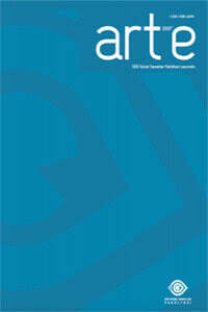Sanat ve Mekan Algısında Kaligrafik ve Tipografik Yaklaşımın Yansımaları
THE REFLECTION OF CALLIGRAPHIC AND TYPOGRAPHIC APPROACH IN THE PERCEPTION OF ART AND PLACE
Calligraphy, Typography, Design Perception, Space,
___
Aydınlı, S. (1986). Mekansal değerlendirmede algısal yargılara dayalı bir model. Doktora Tezi, İ.T.Ü. Fen Bilimleri Enstitüsü, İstanbul.Boothe, R. G. (2002). Perception of the Visual Environment. New York: Springer-Verlag New York.
Claan. (2014, August 4). Innovation Center at Porto University, Portugal. Retrieved April 2017, 2017, from Graphic Ambient: http://graphicambient.com/2014/08/04/innovation-center-at-the-university-of-porto-portugal/
Daniels, P. T., & Bright, W. (1995). The World's Writing Systems. Oxford Univ. Press.
Downs, R. M., & Stea, D. (2011). Cognitive Maps and Spatial Behaviour: Process and Products. The Map Reader, 312-317.
Erdönmez, M. E., & Haznedar, B. (2012). Sosyal İletişim Arayüzü Olarak Kentsel Mekan. Modernite ve Mimari.
Findlay, M. J., & Gilchrist, D. L. (2003). Active Vision: The Psychology of Looking and See. England, Oxford: Oxford University Press.
Foucault, M. (1984). Of Other Spaces: Utopias and Heterotopias. Architecture / Mouvement / Continuite.
Knapp, P. (2014, January 06). YOHO Clubhouse Environmental Graphics. Retrieved April 13, 2017, from https://segd.org/yoho-clubhouse-environmental-graphics
Lampas, P. (2015). The BIGGEST CALLIGRAPHY ARTWORK IN the WORLD. Retrieved April 13, 2017, from Calligroof: http://calligroof.com/
Makowski, A. (2013, October 24). Eureka Carpark. Retrieved April 2017, 13, from SEGD: https://segd.org/content/eureka-carpark
Odeith, S. (2007). Odeith. Retrieved April 13, 2017, from Sergio Odeith: https://www.odeith.com/
Read, H. (1960). Sanatın Anlamı. (G. İnal, Trans.) Ankara: İş Bankası Yayınları.
Sözen, M., & Tanyeli, U. (1986). Sanat Kavram ve Terimleri Sözlüğü. İstanbul: Remzi Kitabevi.
Skott, L. (2011, May 1). BMW M3 Coupe: How to Exceed the Maximum. Retrieved April 13, 2017, from Design Year Book: http://www.designyearbook.com/2011/05/bmw-how-to-exceed-maximum.html
Steadman, P. (2014). Building Types and Built Forms. Kibworth Beauchamp: Matador.
Welch, A. (2014, March 6). Minnaert Building Utrecht, Netherlands : De Uithof. Retrieved April 13, 2017, from e-architect: https://www.e-architect.co.uk/utrecht/minnaert-building
- Yayın Aralığı: 2
- Başlangıç: 2008
- Yayıncı: Süleyman Demirel Üniversitesi Güzel Sanatlar Fakültesi
E-Kitap Tasarımlarındaki Yazılım Problemlerinin İrdelenmesi
Isparta’da Mutaflık ve Son Mutaf Nuri Akkulak Mutaflık
Mustafa Genç, Noman Öztürk, Deniz Çeliker
Alanya Geleneksel Tophane Evlerinin Cephelerinde Mimari Eleman ve Malzemenin Dönüşümü
Erken Cumhuriyet Dönemi Resimlerinde Kadın İmgesi: Modernleşme ve Milliyetçilik
J. S. Bach’ın Bwv 881 Fa Minör Prelüd ve Fügünün Analizi ve Eğitsel Açıdan Öneriler
Rasim Erol Demirbatır, Nilüfer ÖZER
Deneysel Bir Yaklaşım Olarak Kolaj ve Karışık Teknik Uygulamasının Fotoğraf Sanatına Yansıması
Portre Ressamlığından Gazete İllüstratörlüğüne Uzanan Kariyerinde Sabiha Bozcalı
Foucault’nun İktidar Kavramı Odağında Distopik Kurgular ve Sam Shepard’ın Görünmeyen El’i
Sorumluluk Kavramı Üzerinden Görsel İletişim Tasarımında Etik ve Eğitimi
